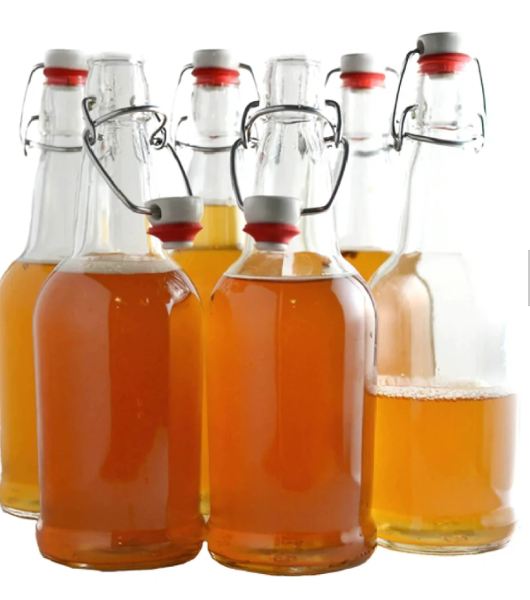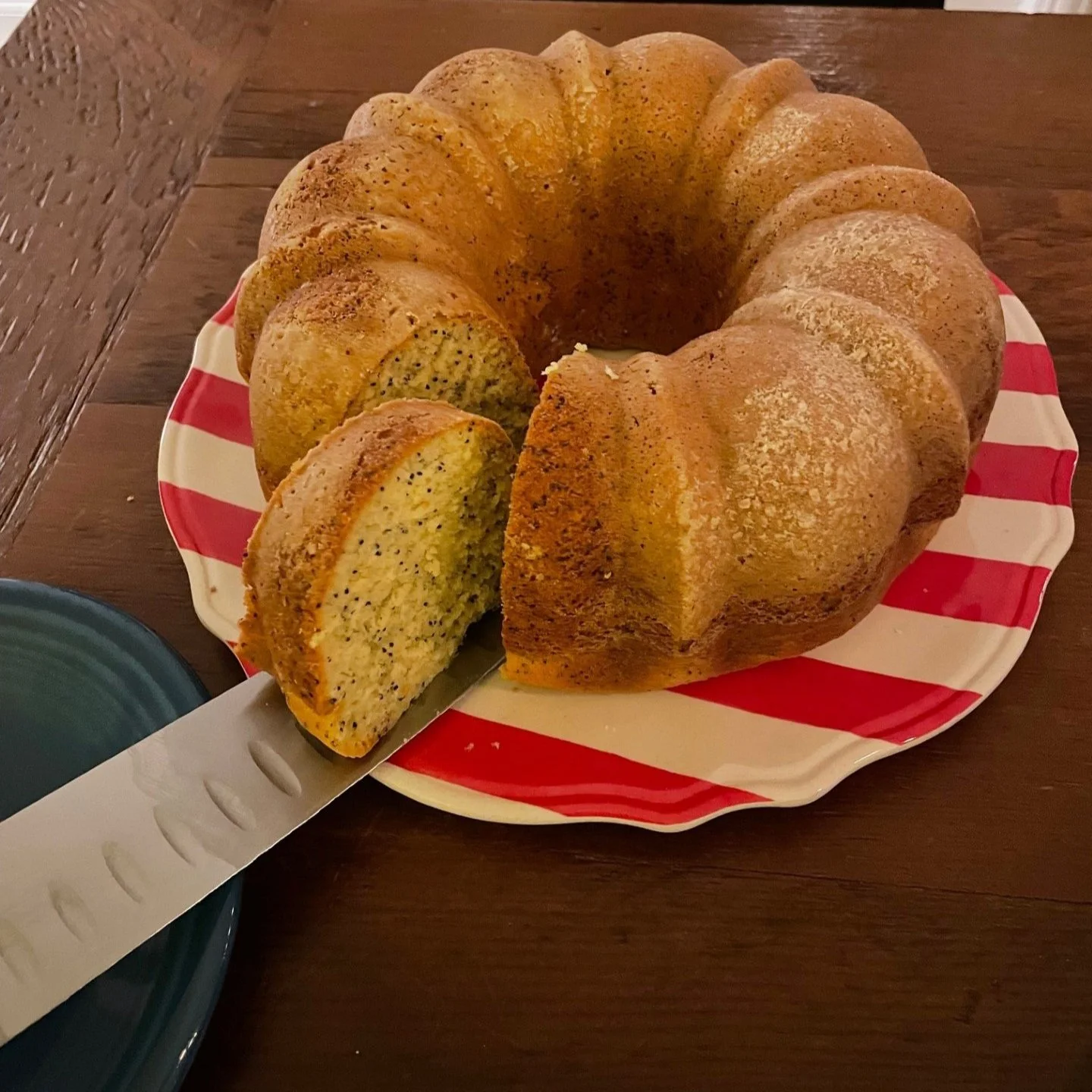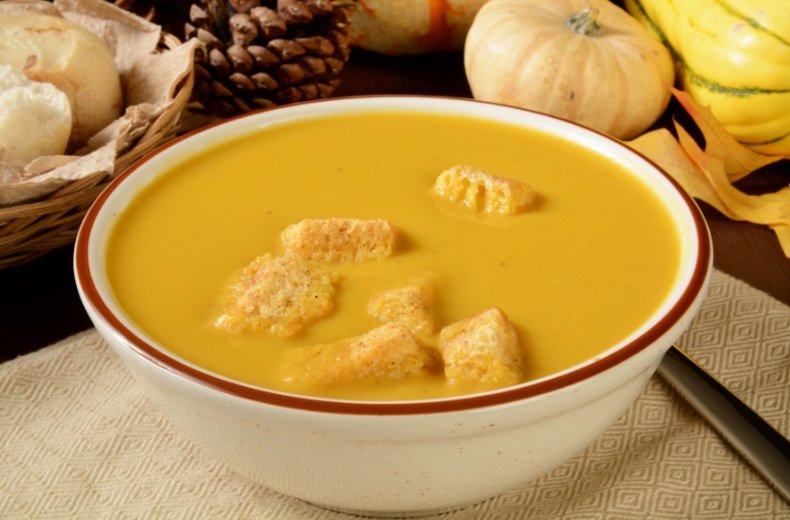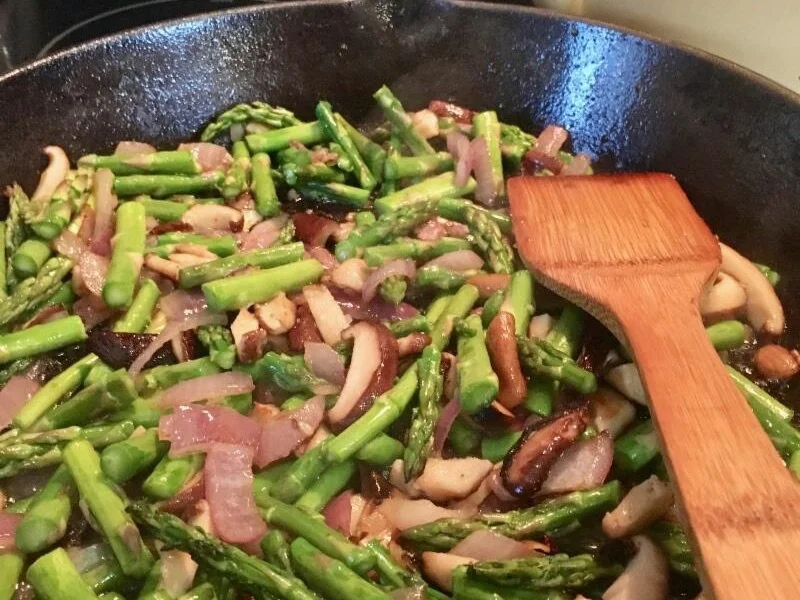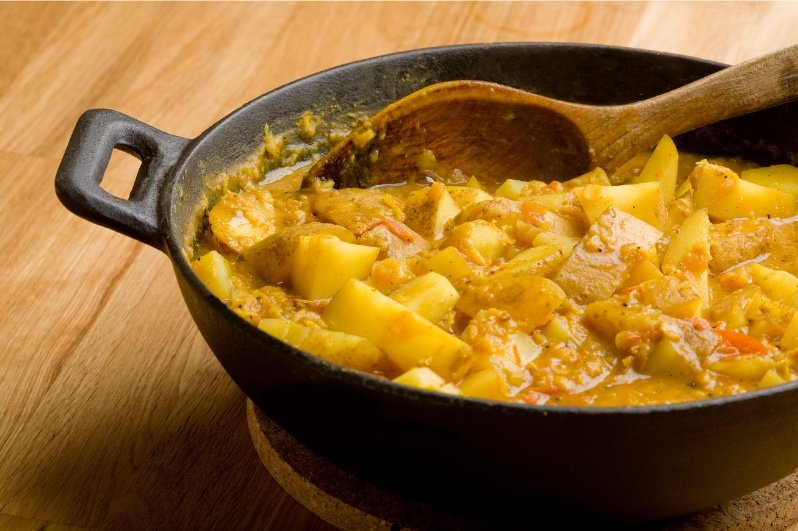Curtido - Probiotic, Spicy, and Easy!
/Curtido is a Salvadoran fermented cabbage slaw, like sauerkraut, and with some kick. It is a tasty and healthy accompaniment to anything you might put cabbage on like tacos, enchiladas, pupusas, soups, brats, sandwiches, rice bowls, stir-fry dishes, and more. It's tangy and crunchy, and you can make it as spicy (or mild) as you like. It’s quick and easy to prepare and keeps for months in the refrigerator, retaining its crunch and health benefits.
Fermented foods like curtido have a myriad of health benefits.
By helping to maintain healthy gut flora, probiotics in fermented foods aid digestion and may even help certain digestive disorders like IBS and GERD.
Healthy gut flora has been shown to help depression, anxiety, and stress.
Minerals like zinc, magnesium, manganese, and iron in fermented cabbage support brain health and mental health.
Phytochemicals like natural enzymes, vitamins, lactic acid, and beneficial bacteria in fermented cabbage help reduce inflammation which is key to wellness. Clinical studies are finding inflammation to be an enormously important factor in health, affecting every system of the body.
Probiotics help prevent the growth of harmful bacteria and boost the production of natural antibodies. As a result, your immunity is enhanced, and the chances of infection are reduced from the common cold to urinary infections.
Fermented cabbage is high in folate and potassium which have multiple benefits including supporting heart health and regulating cholesterol.
Cabbage is high in fiber which helps digestion. High-fiber foods are linked to reduced cancer risk.
The sulforaphane in cabbage prevents oxidative damage, cell mutation, and excessive growth of cells. This offers some protection against cancer, especially colorectal.
Vitamin K, a component of green veggies like cabbage, is important for bone density.
A quick Google search provides a ton of clinical research and anecdotal stories of people's lived experience that demonstrate the health benefits of fermented foods. I have personally noticed improved digestion when I include fermented foods in my diet. My favorite author who writes about fermentation, Sandor Ellix Katz, shares his experience using fermented foods to support his health as a person who has thrived, not just survived, with HIV for decades. After acquiring a few supplies, you will have the tools you need to enjoy the health benefits of fermented foods for years to come. Some of my favorite fermented foods are tepache (sparkling pineapple beverage), ginger, dill cucumber pickles, spicy ginger sauerkraut, sour beets, giardiniera, and of course, curtido; I always have it on hand because of its versatility and yumminess.
Fermentation Vessel and Supplies
The natural fermentation process produces gases that need to escape so you need a vessel that allows air to escape without letting air in. Sterilize your fermentation jar - I use the sterilization cycle on my dishwasher without soap. Vessels that I have used:
crock with a water seal
mason jar with an airlock lid
mason jar with a Kraut Source fermentation lid
mason jar with a Pickle Pipe - my favorite option.
Pickle Pipes are round silicone discs with a little protruding air vent that attach to mason jars with their usual metal ring. They can be used with any wide-mouth mason jar. I usually use my quart or half-gallon jars, and occasionally I'll use a pint jar for a small batch. Pickle Pipes and other fermentation lids are often found in the canning section of stores that carry those supplies, in natural food markets, and may be ordered online.
For a successful ferment, you need to keep the cabbage submerged in brine to prevent spoiling. This can be done with a sterilized fermentation weight, small plate or saucer, small jelly jar full of water, or plastic wrap with a baggie full of brine (1/2 tablespoon salt + 1 cup water). The plastic wrap/baggie option is a good one for vessels with very wide mouths like a kombucha keg or a large crock without a lid. The plastic wrap should cover the whole surface of the cabbage, sitting directly on top of it, and can run up the sides of the jar a bit. Then place the baggie with brine on top of that to weigh down the cabbage and keep it submerged. Use brine in the baggie in case some of the liquid leaks out. I don't love this option due to the plastic touching the cabbage - it will do in a pinch.
A sterilized pickle packer, or a tamper like a large muddler, is a helpful tool to eliminate air bubbles and arrange your cabbage in the jar; you can use a long spoon or your hand if you don't have a tamper available.
Ingredients
1 head of cabbage
3 - 5 medium carrots
½ large onion
1-5 jalapenos or serrano chilis, according to your spice preference
1 tablespoon dried oregano
¼ teaspoon ground cumin
1 - 1 ½ tablespoons kosher or sea salt
optional: 1 - 2 cloves garlic
you might also need 1 cup of distilled water + ½ teaspoon salt, especially if you don't have a fermentation weight, more about this below
Remove the coarse outer layers of the cabbage and discard. Reserve a few nice big leaves and set aside. Quarter and core the rest of the cabbage and thinly slice using a sharp knife or a mandolin. Give the sliced cabbage a good rinse under cold water, drain, and put into a large bowl. Add salt to the bowl and massage the salt into the cabbage. Let the cabbage rest for about 30 minutes allowing the salt to work its way into the cell walls of the cabbage which will release water and make a brine with the salt. While the cabbage rests, peel and then julienne, grate, or thinly slice the carrots. Skin and thinly slice the onion. Discard the seeds of the peppers and thinly slice. If using, grate the garlic.
After about half an hour, a nice pale green brine should form at the bottom of the bowl. Taste the cabbage. You should be able to clearly taste the salt; it should not be overwhelming. If desired, add another teaspoon of salt until the desired saltiness is reached.
Add all ingredients (except distilled water + salt mixture) to the bowl and toss to combine. Transfer the cabbage mixture to your vessel, a few handfuls at a time, packing it down with your tamper or hand as you go to remove air pockets. Leave 2 - 3 inches headspace at the top of the jar. Use one or two of the reserved cabbage leaves on top, folded over to fit neatly into the jar. Place a fermentation weight on top. This should submerge all the ingredients, including the top leaves in brine solution. Then secure your lid, Pickle Pipe, or airlock. If there isn't enough brine to submerge all the cabbage, wait an hour to see if more liquid develops naturally. If the cabbage is still not submerged, add the distilled water + salt mixture until it is covered.
Set the jar aside, at cool room temperature, out of direct sunlight. Check daily and press down the cabbage to keep it submerged beneath the brine as needed. Allow the curtido to ferment for four days to two weeks. You can start to taste it on about the fourth day - do so with sterile hands and utensils, carefully replacing the top leaves and weight and making sure everything is submerged in brine after. It gets tangier the longer it ferments. I usually let mine ferment for about a week. When it has reached your desired tanginess, mason jars can be topped with a regular lid, and if using a crock, transfer to a jar or other airtight container, and store in the refrigerator for up to a few months.
A note on the scent of fermenting cabbage: A friend asked me what my kitchen smells like when I'm fermenting, thinking that it would be very stinky. It’s not! I live with a smell-sensitive person, and she does not mind any of my ferments. While you can catch a whiff if you are very close to the fermentation vessel, the scent is not sulphury-like or foul. If anything, it smells a bit like vinegar.
It may sound intimidating or difficult, but fermentation is incredibly easy. I have not had a batch of anything fail yet! It’s unlikely, but if anything that looks like mold appears, it’s best to toss it and try again. People have been fermenting for thousands of years to preserve food and to make tasty dishes. Now you can. too! If you give it a try, I'd love to hear how it goes.







